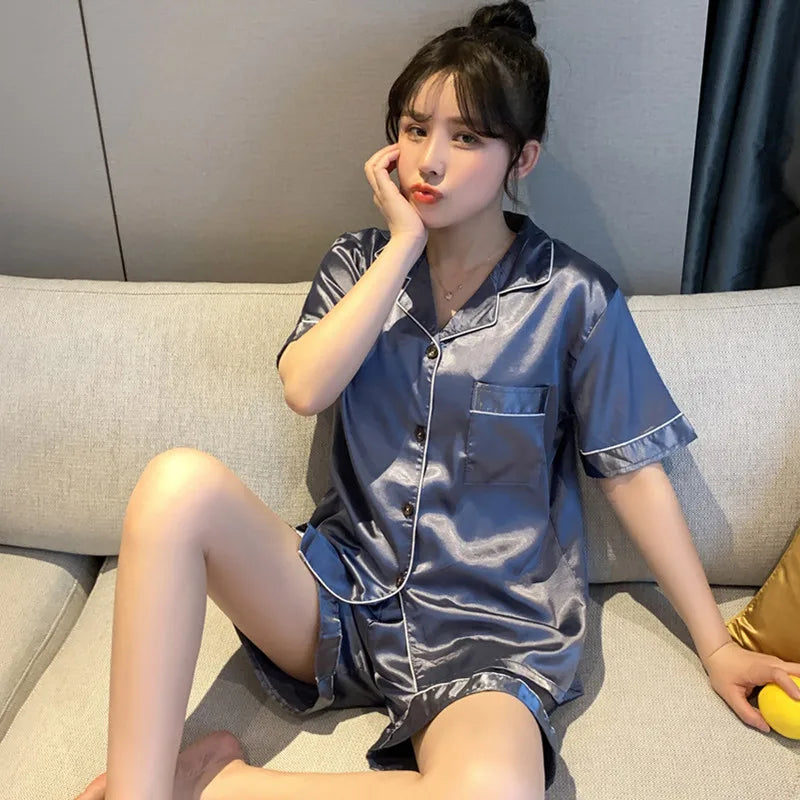How Many Onesies for 3-6 Months? A Comprehensive Guide for Parents
Table of Contents
- Introduction
- Understanding Your Baby's Growth
- How Many Onesies Do You Really Need?
- Choosing the Right Fabric and Style
- The Seasonal Approach to Onesie Needs
- Practical Tips for Managing Baby Clothing
- Conclusion: Embrace Comfort and Style
Introduction
When we think about dressing our little ones, it often brings to mind adorable outfits, bright colors, and the delightful softness of baby clothing. Yet, for many parents, the question of "how many onesies do I need for my baby?" can be a source of confusion and concern. Did you know that during the first year of life, babies can go through an average of 10-12 outfits a day due to spitting up, diaper blowouts, and general messiness? This dynamic stage of growth and change makes it crucial for parents to be well-prepared with the right amount of clothing.
In this blog post, we will delve into the specifics of how many onesies are ideal for babies aged 3 to 6 months, exploring factors that influence this number. We will address common questions, provide helpful tips, and share insights to ensure that your little one is always dressed comfortably and stylishly.
By the end of this article, you will understand the various factors that contribute to your baby's clothing needs, such as growth rates, laundry schedules, seasonal considerations, and more. We aim to equip you with the knowledge to curate a functional and fashionable wardrobe for your baby while embracing the joys of parenthood.
We will also highlight the importance of quality materials, which is where our premium collection of night dresses and onesies at Relaxed Nights comes into play, ensuring your child’s comfort and style.
Understanding Your Baby's Growth
The Rapid Growth Phase
From birth to six months, babies experience one of the most rapid growth phases of their lives. During this time, they will gain weight and length at a remarkable rate, often outgrowing their clothing sizes in the blink of an eye. This growth spurt can be overwhelming for new parents, especially when trying to keep up with clothing needs.
On average, babies typically double their birth weight by around five months, and this can mean that the snug onesies fitting perfectly at three months may soon become too tight. Knowing this, it’s essential to have a sufficient supply of onesies in the 3-6 months size range to accommodate for this growth while ensuring comfort.
Tracking Growth Patterns
Every baby is unique and will grow at different rates. While some may outgrow their clothing faster than others, monitoring your baby's growth can help you make better-informed decisions when it comes to purchasing clothing. Regular visits to the pediatrician will provide insights into your baby’s growth patterns, allowing you to adjust your wardrobe choices accordingly.
Tip: Consider keeping a growth chart at home to visually track your little one’s progress. This can also be a fun way to remember how quickly they are growing!
How Many Onesies Do You Really Need?
General Guidelines for Onesie Count
As a general guideline, we recommend having around 8-12 onesies for your baby aged 3-6 months. This number strikes a balance between ensuring you have enough clothing for daily changes while not overloading your storage space.
Here’s a breakdown of why this range is optimal:
- Daily Changes: Babies can go through multiple outfits in a day due to spit-up, diaper leaks, and other messes. Having a minimum of 8-10 onesies allows for a fresh outfit each day, with a few extras for those particularly messy days.
- Laundry Frequency: If you do laundry frequently, you can get away with fewer onesies. If laundry is done once a week, having around 12 ensures you’re covered throughout the week without running out of clean clothes.
- Quick Growth: Babies in this age group grow quickly, so having a few extra onesies on hand is a smart choice. This way, if your little one suddenly fits into the next size, you won’t find yourself scrambling for clothing.
Factors Influencing Onesie Needs
While the general guideline is helpful, several factors can influence the ideal number of onesies for your baby:
- Laundry Schedule: If you do laundry every couple of days, you may find that having 8-10 onesies is sufficient. Conversely, if you only do laundry once a week, aim for 12-15 to ensure you have enough on hand.
- Seasonal Changes: Depending on the climate and season, the type of onesies you choose can affect how many you need. In warmer months, lightweight onesies are ideal, while cooler months may require more layering options.
- Activity Level: As babies grow, their activity levels increase. Once your baby starts crawling or rolling, be prepared for more frequent outfit changes as they explore their surroundings.
- Personal Preference: Every parent has a different style and approach to clothing for their baby. Some may prefer a minimalist approach with fewer clothes, while others enjoy having a variety of outfits to choose from.
- Special Occasions: Don’t forget to consider special events or outings where you might want your baby to wear something extra cute or themed. Having a couple of special occasion onesies can add variety to your baby's wardrobe.
Choosing the Right Fabric and Style
Comfort is Key
When selecting onesies for your baby, comfort should be your top priority. At Relaxed Nights, we understand that babies have sensitive skin, and that’s why our onesies are crafted from the finest materials. Our collection features soft, breathable fabrics that ensure your baby remains comfortable throughout the day and night.
- Breathable Fabrics: Look for materials that allow airflow, preventing your baby from overheating.
- Hypoallergenic Options: If your baby has sensitive skin, consider hypoallergenic fabrics to reduce the risk of irritation.
- Stretchability: Onesies with a bit of stretch provide a comfortable fit and accommodate your baby's growth.
Styles to Consider
Onesies come in various styles, including short-sleeve, long-sleeve, and sleeveless options. Here’s how to choose the right ones for your baby:
- Short Sleeve: Great for warmer weather and daytime wear.
- Long Sleeve: Ideal for cooler months or for layering under other clothing.
- Sleeveless: Perfect for hot summer days or as an underlayer during colder seasons.
Pro Tip: Having a mix of different styles ensures that you can dress your baby appropriately for any situation, whether it's a sunny day at the park or a chilly evening at home.
The Seasonal Approach to Onesie Needs
Summer and Winter Considerations
The seasons can greatly influence how many onesies you'll need and the types of fabrics you should choose.
During summer, lightweight, breathable fabrics are essential. Ensure you have enough short-sleeve and sleeveless onesies to keep your baby cool. Aim for around 8-10 short-sleeve options and 4-5 sleeveless onesies.
In winter, layering becomes key. Long-sleeved onesies are perfect for keeping your baby warm, and footed onesies can add extra coziness during colder nights. During this season, you might want to stock up on 6-8 long-sleeved onesies and a few warmer options.
Transitional Seasons
Spring and fall can be tricky as temperatures fluctuate. Having a mix of both long-sleeve and short-sleeve onesies is a wise choice. You should consider having around 6 of each style to accommodate changing weather conditions.
Practical Tips for Managing Baby Clothing
Efficient Laundry Practices
To make managing your baby’s wardrobe easier, consider implementing efficient laundry practices:
- Sort by Type: Keep your baby’s clothing organized by type (e.g., onesies, pajamas, etc.) to make finding what you need easier.
- Stain Treatment: Treat stains immediately to ensure your baby’s clothing stays looking fresh and clean.
- Plan Ahead: If you know you have a busy week ahead, plan to do laundry earlier or stock up on additional onesies to avoid running out.
Creating a Wardrobe Capsule
Consider creating a capsule wardrobe for your baby. This means selecting a limited number of versatile pieces that can be mixed and matched. For example:
- Choose a color palette that allows for easy coordination.
- Select styles that can be worn for different occasions (casual, dressy, etc.).
- Invest in quality pieces that will withstand frequent washes and wear.
Conclusion: Embrace Comfort and Style
In conclusion, the question of how many onesies for 3-6 months can be answered with a range of 8-12 based on your laundry habits, seasonal considerations, and your baby’s growth patterns. By understanding the factors that influence clothing needs and prioritizing comfort and quality, you can create a stylish and functional wardrobe for your little one.
At Relaxed Nights, we are dedicated to providing premium nightwear that combines elegance and comfort, perfect for your baby's needs. Our collection includes soft, breathable onesies designed to keep your baby cozy and stylish.
FAQ
Q: How often should I replace my baby's onesies?
A: It’s a good idea to check your baby’s onesies regularly for wear and tear. Look for signs of fading, stretching, or fabric damage, and replace them as needed.
Q: Should I buy more onesies as my baby grows?
A: Yes! As your baby grows, you may need to adjust the number of onesies you have on hand. Keep track of their growth and be prepared to purchase new sizes.
Q: Are there specific types of onesies that are better for sensitive skin?
A: Look for hypoallergenic fabrics and those that are free from harsh chemicals. Our collection at Relaxed Nights focuses on soft, comfortable materials perfect for delicate skin.
Q: Can I use onesies for sleep as well?
A: Absolutely! Onesies are great for sleepwear, providing comfort and ease of diaper changes during the night. Our onesies are designed for both daytime and nighttime use.
Q: How do I ensure my baby's onesies last longer?
A: To extend the life of your baby’s onesies, wash them in cold water and avoid harsh detergents. Additionally, line drying or using a low heat setting in the dryer can help maintain their shape and quality.
By embracing these guidelines and being mindful of your baby’s needs, you can create a comfortable, stylish, and functional wardrobe that enhances their early years, all while enjoying the precious moments of parenthood.



